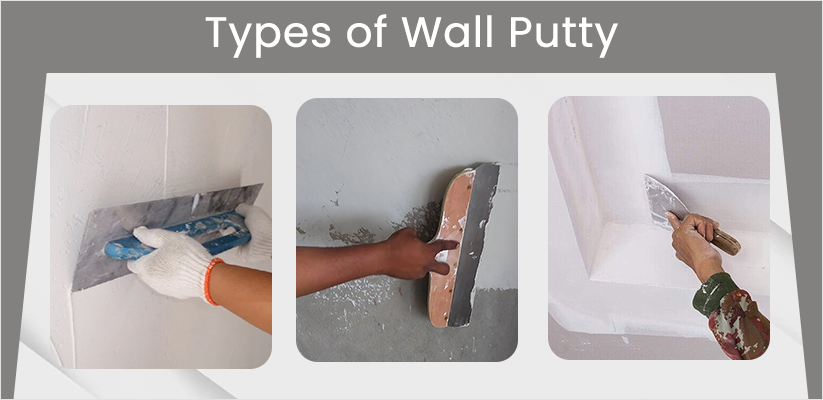India as a country is known for its unique architectural style and aesthetics all over the world. The Indian architecture is a blend of many varieties of Mughal, Indo-Saracenic, and Hindu Temple architecture. And these architectural notions have been adapted to Indian homes.
People feel elated when others praise the attractive and well-finished interiors and exteriors of their homes. But even the slightest imperfections or flaws on walls or other areas can tarnish the beauty of your home.
Hence, it is essential to preserve our beautiful housing architecture against the deteriorating factors caused by environmental influences such as air pollution, moisture, intrusion by micro-and macro-organisms etc. The results created by such environmental influences are flaking, crack formation, dampness of walls and other factors.
The use of wall putty is vital as it provides a protective layer to the interiors and exteriors of your home by leveling any undulations and eliminating the imperfections created by the above factors with a natural finish.
Several types of wall putties have been introduced in the market, each having its own purpose and method of use. With the launch of white cement-based putty in the construction industry, it has garnered ample attention. It is still gaining the interest of many people due to its premium quality and durability in comparison to acrylic-based putty.
To understand the two terms white cement based putty and acrylic putty better, here’s a table of comparisons to help:
| Basis | White Cement Based Wall Putty | Acrylic Based Wall Putty |
| Appearance | It has a clear and better appearance due to its incredible white colour. | It has an off-white or pale appearance. |
| Application | It is ideal for interior and exterior home renovation purposes. | It is only ideal for interior parts of the home. |
| Durability | Highly durable due to its optimum binding properties. | Less durable as over some time it begins to wither and cause flaking or peeling to the paint on the walls. |
| Water-resistance | It is highly resistant to water and dampness for a longer period of time. | It is not water-resistant. |
| Adhesion | It has excellent tensile adhesion strength. | It has a lower rate of adhesion than white cement-based wall putty. |
After getting an overview of the benefits of both types of wall putties, you can decide what type of wall putty is best for your house.
Wall putties come in different consistency but their quality varies from brand to brand. Apart from just safeguarding your home walls against dampness, cracks and peeling, a good quality putty also elongates the paint life of the walls of your home. Thus, if you are thinking of putting expensive paint on your walls to enhance your home decor, it’s always best recommended to apply a white cement-based wall putty to it for better coverage, durability, strong adhesion and resistance against abrasion.
One of the best wall putty brands in India, JKCement has manufactured and delivered a wide range of white cement-based wall putties to many Indian households. Especially the JKCement WallMaxX White Cement Based Putty has become the preferred choice of several Indians who are looking to construct their new homes. Made with Abrasion Resistant Technology (ART), it gives your walls superior coverage, exceptional whiteness, smooth and glossy finish, as well as prevents flaking and crack formation.
Selecting a wall putty to work well with your home can be challenging since various options are available to choose from. Therefore, before choosing a wall putty, it is essential to consult with an expert. They may give you advice on the kind of putty that is best for your house by taking into account factors like the amount of sun and moisture exposure.
